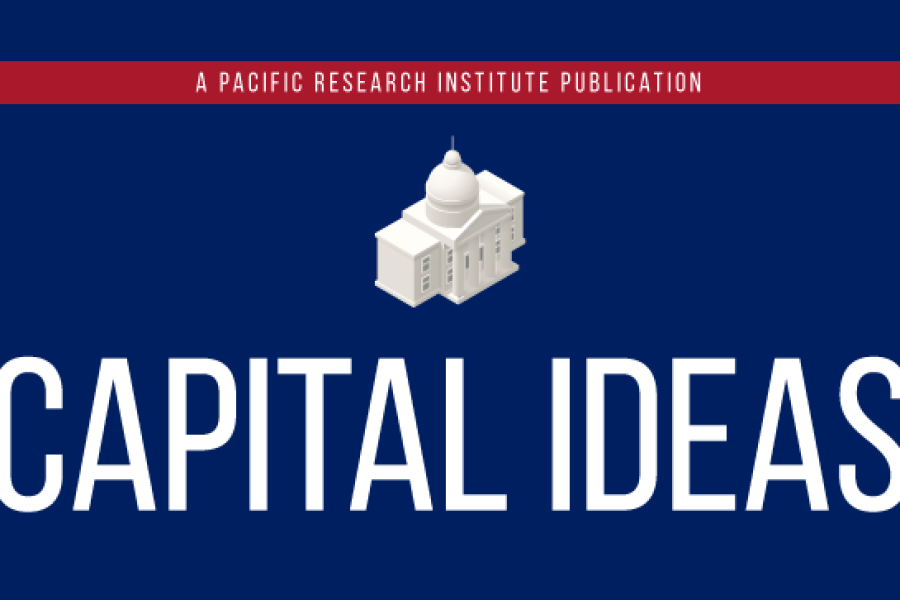In a state where residents are increasingly given orders rather than more choices, an unelected group has decided that by 2030, 90% of all rideshare miles must occur in electric cars. We’re expected to accept this as progress. It will turn out to be anything but.
The California Air Resources Board, by a unanimous vote, adopted on May 20 the Clean Miles Standard. The objective is to “help” the state “meet its climate and air quality goals.” Whether well-intentioned or an exercise in virtue signaling, the rule will set off sticker shock. The conversion will cost as much as $1.73 billion, says the Union of Concerned Scientists. So who gets the bill?
Eventually, consumers and taxpayers. Even if the rideshare companies or drivers themselves are to be responsible for transforming a fleet that is now less than 2% electrified to be nearly fully electrified in less than a decade, the added costs will be passed on to consumers. Should politicians subsidize the switch, then taxpayers will shoulder the burden.
The CARB staff assumes the additional expenses will be offset by savings through reduced fuel and maintenance costs. But can anyone really when the “savings” promised by a government mandate ever materialized?
There’s also the unresolved question of feasibility. The demand of EVs, increased by government fiat rather than natural market pressures, might outstrip makers’ ability to create an adequate supply. Electric cars require a unique blend of raw materials that aren’t needed to build conventional automobiles, and “the world may not have enough minerals and metals” to do the job, says energy consultant Ronald Stein.
These raw materials are available in only a few countries. Nearly half of all world cobalt reserves are found in the Democratic Republic of the Congo, according the United Nations, while Chile has 58% of lithium reserves, China, Brazil and Turkey hold 80% of natural graphite reserves, and 75% of manganese comes from Australia, Brazil, South Africa and Ukraine.
“The highly concentrated production” is “susceptible to disruption by political instability,” says the U.N., which “raises concerns about the security of the supply of the raw materials to battery manufacturers.” A disruption in supply could “lead to tighter markets, higher prices and increased costs of car batteries, affecting the global transition to low-carbon electric mobility.”
Demand for just two of those minerals, lithium and cobalt, most of which are found in a resource-rich country where the diamond trade funds bloody civil war, is expected to increase 18 and 37 times, respectively, by 2030 compared to 2015. A report compiled by British scholars warns that “without major changes in certain technologies, the cobalt and lithium supply chains could seriously constrain the widespread deployment of EVs.”
Even an “incremental demand due to mass EV penetration could exacerbate an emerging, and somewhat challenging to address, deficit in this critical metal market.” The outcome will surely be “significantly higher long-term prices.”
There are social and environmental costs to consider, as well. Roughly one-fifth of cobalt supplied by the Democratic Republic of the Congo “comes from artisanal mines where child labour and human rights abuses have been reported,” says the U.N. “Up to 40,000 children work in extremely dangerous conditions in the mines for meager income.”
In Chile, lithium mining “uses nearly 65% of the water in the country’s Salar de Atacama region, one of the driest desert areas in the world, to pump out brines from drilled wells.” In addition to “groundwater depletion and pollution,” lithium extraction has caused “environment degradation, landscape damage and soil contamination.”
If the supply issue were to be resolved – and the uneasiness about the social and environmental costs of acquiring the minerals ignored – the growth of EV ownership will create another challenge: providing enough electricity to meet the increased demand to keep the cars charged.
Retired meteorologist Anthony Watts believes the state is headed to a “green new car version of a train wreck.” Even with the proliferation of off-the-grid rooftop solar panels generating electricity over the coming years, he said the massive drain on supply by EVs “leaves nothing left for air conditioning, appliances, lighting, etc. It would all go to charging the cars, and that’s during the day when solar production peaks.”
Policymakers, bureaucrats, interest groups, pundits, celebrities, and millions of everyday Californians are sure the EV mandates are checkpoints on the road to progress. The bitter experience we’re being set up for, though, will show just how wrong they are.
Kerry Jackson is a fellow with the Center for California Reform at the Pacific Research Institute.


